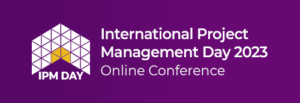By Harold Kerzner, Ph.D.
October 4, 2023
We take it for granted that, as time passes, the project management issues and challenges we had in the past have been resolved and the focus is on new project management problems. This is not always the case. Sometimes the problems we think we solved previously end up reappearing, but in a different format. This is now happening because of the growth in project management applications.
Projects are typically managed by project teams composed of a project manager (PM) and assistant project managers (APMs). The number of APMs can vary by company based upon the complexity of the projects. The APMs can be direct reports to functional organizations but at the same time are under the direction of the project managers to assist in all aspects of a project and to make sure that the project runs smoothly from start to finish. The APMs can be assigned part-time or full-time.
In the early years of project management, it became apparent that some projects required a management team to be successful. Although the need for APMs was quite apparent, the responsibilities assigned to the APMs were unclear. Companies took different approaches to assigning responsibilities to the APMs.
Skills Needed: The Early Years
In the 1950s and 1960s, the aerospace and defense industry contractors were the heaviest users of project management and established many of the forms, guidelines, templates, and checklists that were later updated to become the standards for project management. Most of the project managers were engineers with advanced degrees in a technical discipline.
The two criteria most often considered at that time when selecting someone to be a project manager were a command of technology and writing skills. Many of the companies maintained technical writing departments to support project managers with poor writing skills. Human relations skills were not seen as a priority.
During this time, the U.S. Department of Defense (DoD) was having a problem determining the true status of many of the projects they were funding. Each contractor had a different approach for writing status reports. DoD was spending a great amount of time trying to understand each contractor’s status report. DoD established the Earned Value Management System (EVMS) in the 1960s as a means of standardizing project status reporting.
Project management emphasis was placed upon the technology and the processes to achieve the technology. Most of the projects were measured in weeks or months rather than years. As such, the behavioral side of project management was given little attention. Project managers viewed assigned employees as a short-term temporary expense to be removed from the project as soon as possible. Seminars on project management focused heavily on the tools needed for planning, scheduling, and cost control.
As the duration of projects began to increase, the importance of interpersonal skills became apparent since PMs were now spending significantly more time collaborating with team members. Many of the engineers assigned as project managers had never taken any courses related to interpersonal skills and had never had any employees reporting to them.
Early Types of Assistant Project Managers
As projects increased in duration, PMs recognized the need for continuous collaboration with some of the team members. Even though the PMs did not have any responsibilities for wage and salary administration, they still had to resolve many behavioral issues.
Aerospace companies found a solution by creating an assistant project manager position dedicated to human relations issues. The APMs often possessed little knowledge about the project’s technology, but helped the project managers with collaboration issues, conflict resolution, and ways to communicate with and motivate team members.
As project management began to grow, companies found additional uses for APMs. It was not uncommon on large projects to have an APM for engineering and/or an APM for manufacturing. As an example, let’s assume a PM (who does not report directly to an executive in engineering) has several engineers assigned to his/her project. The vice president for engineering wanted only someone in engineering to be allowed to provide work assignments and technical direction to engineering employees assigned to projects. The solution was the creation of an APM for engineering. The PM would then provide instructions to the APM for engineering who then had the authority to relay the information and provide instructions to the engineering employees. Some companies called the APMs for engineering and manufacturing the project engineer and the project manufacturing engineer.
These APMs reported on a “solid line” to their functional organizations and on a “dotted line” to the PMs. Functional managers preferred to have work assignments and daily direction to their employees assigned to projects to come from APMs that were direct reporters to the functional units. The side benefit was that this approach often eliminated situations where employees were receiving conflicting assignments.
During the 1980s, another form of APM appeared. A company in the aerospace sector created an APM for reports management. Project managers were becoming deeply involved in report preparation for stakeholders and this was detracting from the time needed for monitoring and controlling the project. The intent was to free up the PMs from the administrative details of coordinating reports and working with the team members creating the reports. The APM for reports management did not write the reports but reviewed all reports for content, structure, and security classification of data. The APM also managed coordination with stakeholders for the reports and ultimately, distribution.
During the 1990s, another APM form appeared. A company in the automobile sector realized that many of the PMs had a command rather than just an understanding of technology and were expected to become overly involved in the technical and business details of some of their projects but were spending much of their time with project administration details. The company created an APM for administration. This freed up the PMs for more involvement with the technical and business community.
Growth in Assistant Project Managers
Prior to the turn of the century, not very much was written about the roles and responsibilities of the APMs. The creation of standards for project management, new versions of PMI’s PMBOK® Guide, and advances in project management forms, guidelines, templates, and checklists eliminated the need for APMs in many companies. However, all of this was about to change.
Two factors that are forcing some organizations to revisit some past project management challenges with APMs are the types of new projects companies are undertaking and the duration of the projects. Many of the new types of projects require innovation, design thinking and significant levels of creativity. These projects require team members with different skills than with many of the traditional types of projects in the past. The duration of many of the new types of projects is significantly longer than with traditional projects. Project managers must now spend more time interfacing with team members and therefore collaboration and interpersonal skills have grown in importance.
The new types of projects are using newly created flexible methodologies such as Agile, Scrum, and hybrid approaches. PMs are no longer able to manage all of the administrative duties they handled previously. The need for APMs has resurfaced. Today’s roles and responsibilities for an APM include:
- Updating schedules
- Coordinating reports
- Preparing progress reports
- Scheduling meeting and site visits
- Working with stakeholders, clients, and vendors to meet expectations
- Updating functional managers on performance
- Invoicing
- Assisting the PM with planning, monitoring, and control throughout the project’s life cycle
- Assist team members with obtaining needed information
- Addressing concerns
- Maintaining client relations
- Identifying resource requirements and shortages
On the surface, APM roles and responsibilities appear to be like those of a PM. However, there are some differences. PMs usually have the additional responsibility for strategic decisions, scope changes, and authorization of risk mitigation strategies, to name a few.
APMs are now formalized career path positions with job descriptions. The growth of high-risk projects involving creativity and longer time frames than usual have made senior management aware of the benefits of establishing APM positions. The training ground for future PM positions could very well be the APM positions.
Dr. Harold D. Kerzner is Senior Executive Director at the International Institute for Learning, Inc., a global learning solutions company that conducts training for leading corporations throughout the world.
He is a globally recognized expert on project, program, and portfolio management, total quality management, and strategic planning. Dr. Kerzner is the author of bestselling books and texts, including the acclaimed Project Management: A Systems Approach to Planning, Scheduling, and Controlling, Thirteenth Edition. His latest book, Project Management Next Generation: The Pillars for Organizational Excellence, co-authored with Dr. Al Zeitoun and Dr. Ricardo Viana Vargas, delivers an expert discussion on project management implementation of all kinds.
Dr. Harold Kerzner is a Keynote in this year’s IPM Day 2023! Register here.
Disclaimer: The ideas, views, and opinions expressed in this article are those of the author and do not necessarily reflect the views of International Institute for Learning or any entities they represent.



